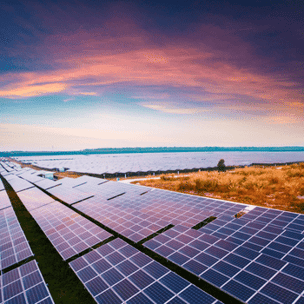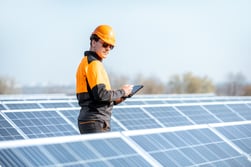Fire breaking out at photovoltaic (PV) farms has the potential to be costly: on project finances, on the environment, and on the perception of solar technology. The cost of repairing assets ravaged by fire is one thing but dealing with the fall out of enraged local residents or the consequences of scorched environments could be even more tricky.
That is why assessing fire risk and implementing a strategy to mitigate against that risk is a critical part of responsible solar farm management.
Our report “Hidden Danger: Why Solar Farms Fire Risk Could be Greater Than You Think” investigated the importance of Fire Risk Assessments (FRA’s) on solar farms and the most effective way to conduct them. But these principles are equally applicable to the solar industry and could help owners and operators of utility scale arrays to reduce the risk of fire on their operations.
Here are six industry tips that owners, operators and investors should consider when pulling together fire risk assessment.
1. Likelihood and Consequences

The consequences of fires on PV farms are vast and varying. One of the largest financial risk factors for solar is the loss of energy production while assets are being repaired and recommissioned.
Loss of revenue is not the only consequence which occurs with this. As we become more reliant on renewable sources, we need to ensure that the grid retains the capacity to meet demands while large PV farms are out of action.
Looking at the data and considering the damages associated with solar fires in your FRA, it becomes clear that the cost for fire suppression systems is minuscule in comparison to the high financial losses that would be caused by the destruction of panels and the surrounding environment – particularly in the current supply chain environment.
2. The Scope of the FRA
There are various methods that can be used when defining the scope of an FRA to meet the different needs of a project.
FRA’s can incorporate a single system or multisystem approach for example – with the latter requiring more sophisticated methods based on the overall impact of key factors of both passive and active systems. Due to this, it is important to define which is best to fit the needs of your project.
While a multisystem has a better chance in preventing the likelihood of fire, they are also expensive and require more initial capital compared to a single system assessment. Therefore, by defining the approach for an FRA early on, a more effective process and solution for the assets can be taken.
3. Fire Scenarios and Outcomes
While the overall quality of newer PV installations is improving as the industry matures, the number of incidents involving solar panel fires will continue to increase simply as a result of probabilities. By ensuring that your FRA covers all possible scenarios, you are prepared for several situations within one plan.
These scenarios include fire ignition, fire growth, and response failure. Each progression of a fire at a PV farm has unique outcomes and therefore individualized contingency plans to prevent further loss of assets and further mitigate for personnel safety risks, and environmental damage.
For example, in a fire ignition scenario, to prevent it from escalating, the focus is on educating the asset owners and operators on causes and the prevention of these hazards. Fire growth centers on the tools which can be used to prevent the spread of the fire, including, fire suppression systems.
The final stage – response failure – looks to ensure emergency services are able to access the site in a timely manner while also having the correct resources to do so. Segmenting your FRA into different scenarios ensures contingency plans for every possible situation which may occur during a fire on one of your assets.
4. The Intended Audience
When formulating the FRA and its respective methods, it is important to cater to the knowledge and needs of the intended audience. By keeping your audience in mind, you can ensure higher levels of safety when dealing with a fire while also reducing the amount of asset damage, especially in an ignition scenario.
5. Team Expertise

When conducting an effective FRA, ensuring the teams credentials is essential. Your team needs to have experience and expertise in understanding the potential risks as well as assigning responsibility to implement the correct fire suppression solutions.
One of the best ways to ensure the quality of an FRA is by hiring a consultant such as an insurance loss adjuster or a fire risk investigator who has experience in operating in PV farms. In doing so, you ensure your FRA is carried out to the highest standard while mitigating risk to your assets.
6. A ‘Fire Safety Concept Tree’
Developed by the National Fire Protection Association (NFPA), Fire Safety Concept Trees create visuals which allow you to see relationships between fire prevention and control strategies, showcasing any gaps which may have arisen in your FRA. This ultimately helps your audience to better understand the best prevention techniques and solutions to use in specific situations.
With PV fires on the rise, projects need to safeguard assets from fire risk to ensure personnel safety, financial security, and operational functionality. To successfully develop and grow the solar power industry, operations must be as risk-free as possible from a human, operational, and financial perspective. Going forward, asset owners must take responsibility for protecting their investments.
This includes taking necessary precautions to limit the potentially devastating outcomes of fires on solar farms. by developing advanced FRAs and investigating the need for installing health and safety technologies such as fire suppression systems to their solar projects.
